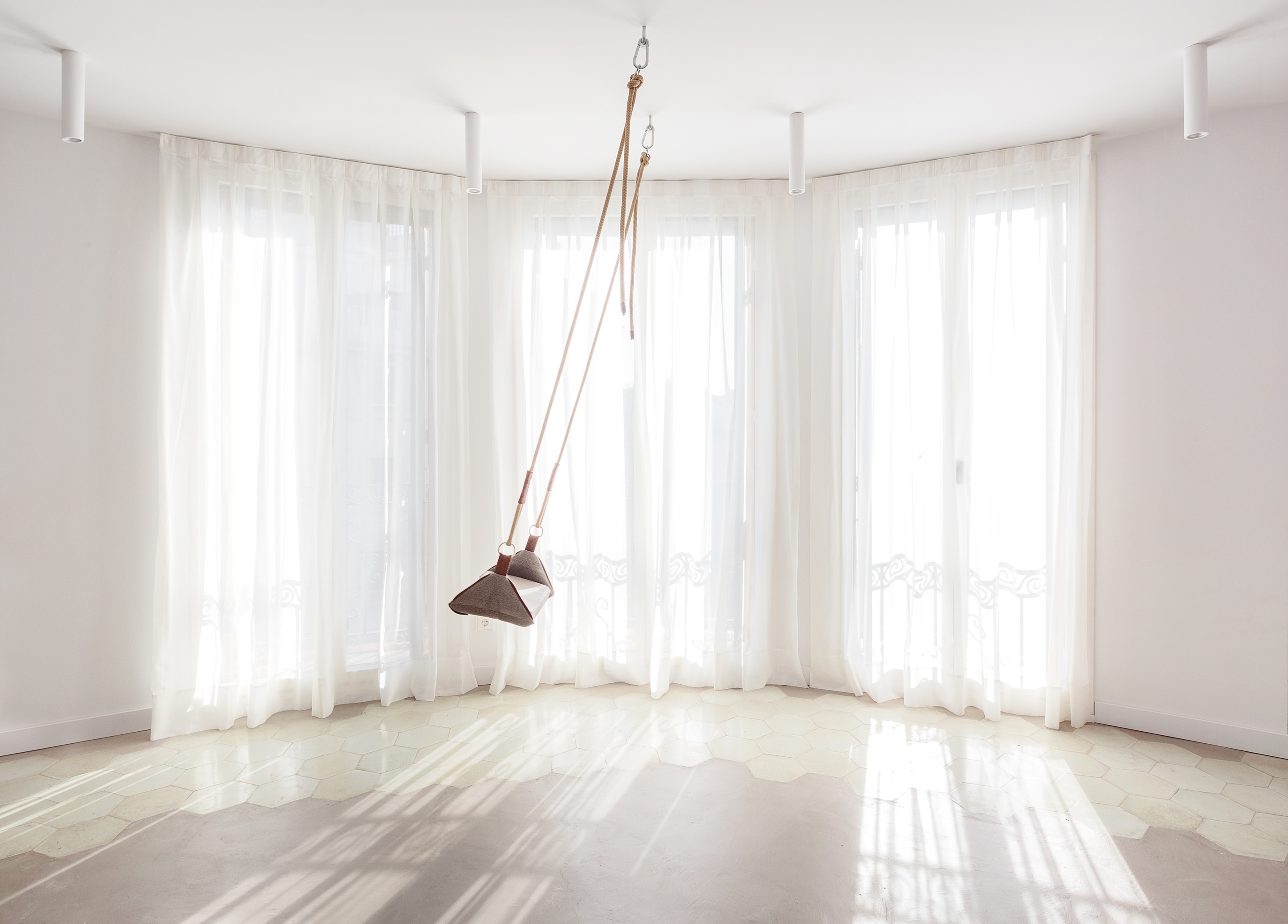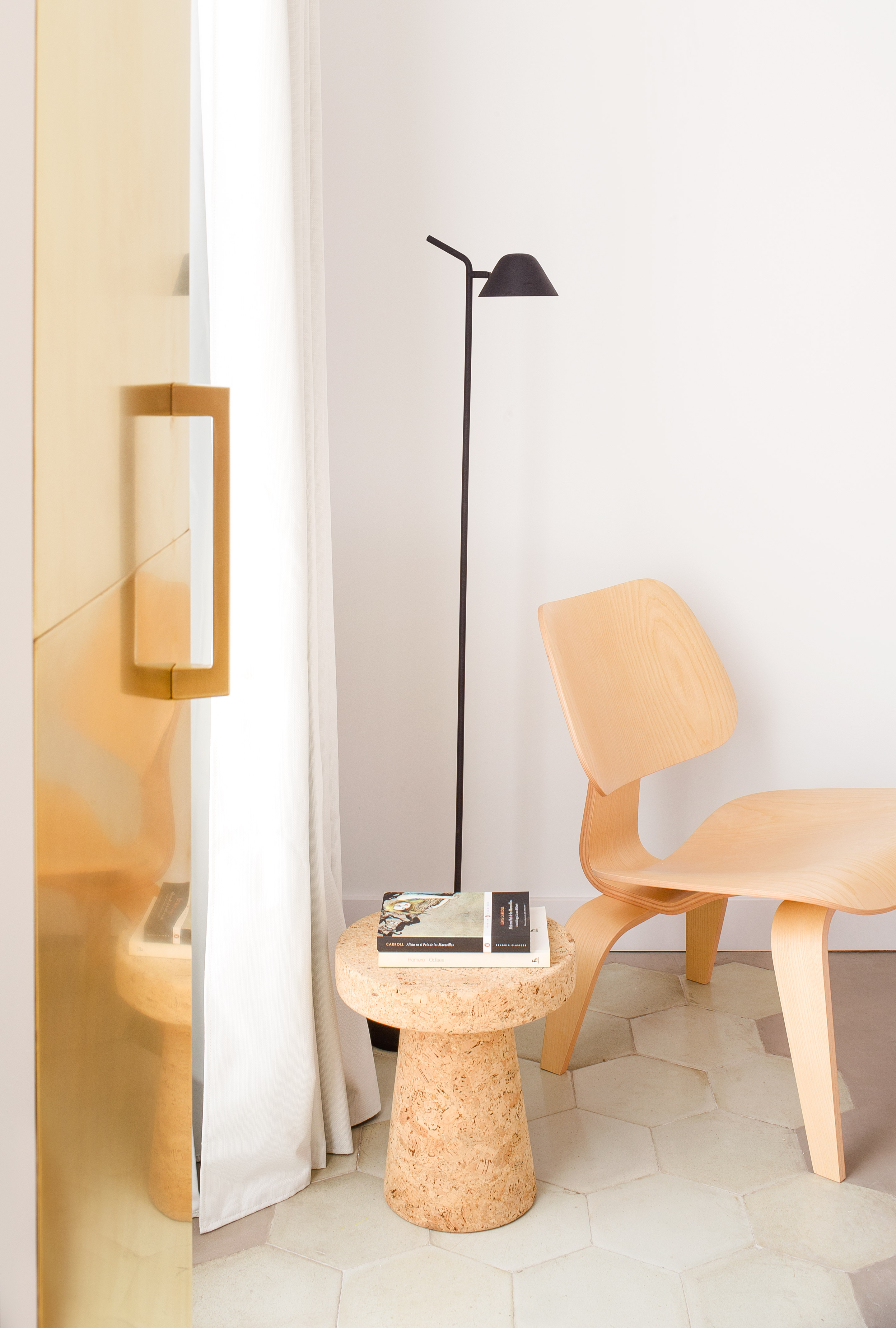Atic Aribau is a minimalist interior located in Barcelona, Spain, designed by Raúl Sánchez. The project encompasses the comprehensive reform of a spacious apartment of 110 square meters located at the intersection of Aribau and Roselló streets, with façade to one of the characteristic chamfers of Cerdà’s Eixample in Barcelona. The new inhabitants, a couple of local creatives, presented some requirements that the existing state of the apartment, quite subdivided and outdated, did not meet, so all the interior partitions were demolished, but respecting the system of structural bays of load bearing walls parallel to the facade, something very characteristic of these chamfer blocks.
The project proposes a long front of oak wood, perpendicular to the façade, which houses the bedroom, the dressing room and the studio, as well as generous closets and support areas. This front serves as the interior façade, and three functional blocks are projected on it transversely. The outermost is the block of living areas, with a joint living room-dining room-kitchen. This block takes advantage of all the development of the façade of the chamfer, and reveals its entire length. Likewise, the wooden partition does not touch the façade, as it is interrupted giving way to large pivoting doors of lacquered wood with vertical strips of brass in contact with the wood, without frames, so that the entire facade can be understood in an uninterrupted, unitary way.
A block of bathrooms, storage and pantry is located on the other side of the existing structural wall. The main bathroom is designed as two spaces: a first one with a glazed and lacquered iron front, where the bathtub, the washbasin, and the boudoir area are located; and a second more private area with two cabins, one for the water closet and another one devoted to a huge shower space. At the inner end of the apartment there is a third block with the guest bathroom and the room for the couple’s cats.
The textures, materials and colors are dominated by the oak wood, which contrasts with a more serene palette of grays of concrete, microcement, or mass colored wooden boards. The flooring that remains behind the wooden front is a wooden one, also of oak, but of a lighter tone, these rooms being more domestic; while the rest of the interior flooring is made of continuous grey micro-mortar, shifting to pink in the master bathroom.
Granites, door handles and faucets made of brushed copper, pivoting wooden doors with brass inlays, glass with different textures add greater material richness in the form of subtle notes, also indicating the joints and transitions between materials. As a carpet, or interior path, hydraulic hexagonal tiles recovered from the former flooring are arranged, covering the entire length of the chamfer façade, pointing out precisely the importance of the chamfer itself in the conceptual development of the proposal. This tiled path is also illuminated by long and narrow cylindrical lamps, highlighting this path by means of artificial lighting. Finally, a swing was installed in the center of the chamfer, introducing a playful note much desired by the clients.
Photography by David Zarzoso
View more works by Raúl Sánchez


















